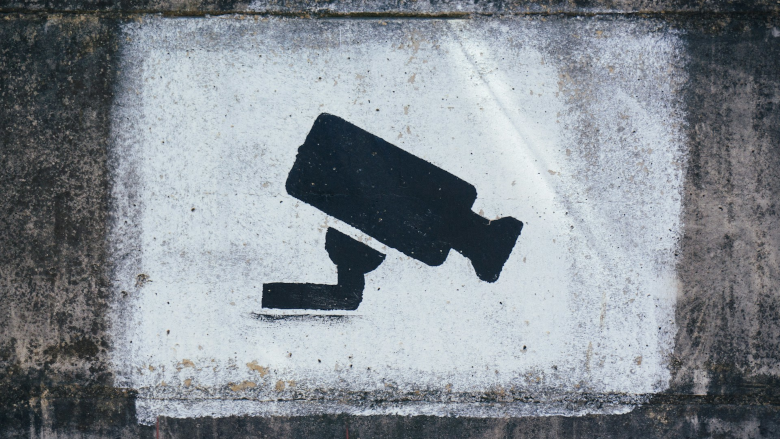- Learn with Cisco at Cisco Live 2025 in San Diego
- This Eufy robot vacuum has a built-in handheld vac - and just hit its lowest price
- I highly recommend this Lenovo laptop, and it's nearly 50% off
- Disney+ and Hulu now offer prizes, freebies, and other perks to keep you subscribed
- This new YouTube Shorts feature lets you circle to search videos more easily
Tips for recovering lost DVR or CCTV footage

Round-the-clock surveillance footage is crucial for protecting assets, ensuring building security and investigating criminal incidents.
Most modern CCTV surveillance systems run autonomously and capture hours of footage in large repositories, but it’s important to establish contingency plans in case this data is lost, stolen or overwritten.
Even the most robust and resilient security systems can fall victim to data loss or theft, or accidentally overwrite important CCTV or DVR video footage. Considering the recent CrowdStrike-Microsoft outage, preserving vital footage becomes increasingly important.
But it’s reassuring to know that there are ways to potentially recover this data should it be lost. For enterprise security teams and leaders, understanding the intricacies of recovering lost, stolen or overwritten CCTV or DVR footage will drastically improve incident response and real-time security preparedness.
How CCTV footage may get deleted
If teams should lose important CCTV footage unexpectedly, it’s crucial to isolate how that might have happened. This will provide the best possible chance of recovering that footage and the right route for doing so.
There are many reasons why CCTV or DVR video footage may get deleted. For example, old footage may get overwritten after a certain time, depending on a system’s storage capacity. Some DVRs, SD cards or hard drives are prone to malfunction or corruption, making footage inaccessible.
Cloud-based systems can — if not properly secured with strict access control and authentication — be prone to calculated or opportunistic cyber attacks, locking users out of accessing important surveillance footage.
Furthermore, recorded footage can be manually deleted accidentally or deliberately, stemming from poor system management or training gaps. As with any hardware, fire, water, and environmental conditions can also damage devices, meaning proper security is key.
While less common in enterprise settings, some organizations use remote or handheld video cameras for covert or undercover activity, which can feed back into on-site systems. If something happens to teams on the ground, incriminating or vital footage can be lost or fall into the wrong hands.
How to prevent CCTV data loss
Recovering lost video data is possible, but it’s always preferable to prevent and mitigate as many risks of loss as possible. Consider the following practices to minimize these risks:
- Establish regular backup processes for critical footage.
- Invest in additional, reliable storage to prevent automatic overwriting.
- Bolster access controls to prevent unauthorized users from getting hold of data.
- Determine the best possible climate and security for DVR systems prone to overheating or damage.
- Deploy stronger encryption, patch management, network segmentation and multi-factor authentication (MFA) for systems.
- Create and update clear data integrity and hygiene policies to hold employees and leaders accountable in case incriminating data is lost.
How to recover lost or deleted CCTV footage
No security system is ever 100% resilient, and accidents can happen. Familiarizing the security team with the following ethical and approved CCTV data recovery methods is recommended.
Investigate built-in DVR backup features
Firstly, delve deep into the system’s hardware to check its built-in backup options before attempting a more technical, complex recovery process. The system may have already automatically backed up lost footage, perhaps stored on a secondary hard drive, network-attached storage (NAS) drive, a native cloud-based system or a built-in SD card.
Use data recovery software
Should backups not be an option, specialist third-party data recovery software can be the next best option. These tools scan storage devices for deleted or corrupted files and retrieve them for transferring to a desired storage location. Ensure that security teams opt for reputable, enterprise-grade solutions that are compatible with the incumbent security system.
Failing this, in cases of severe or widespread data corruption or a prolific cyber incident that has ground operations to a halt, consulting a professional data recovery company will be the next step.
Undertake a forensic analysis
Severe cyber incidents resulting in large CCTV footage loss — such as the recent Life360 data breach — may warrant a deep forensic analysis of the system. This involves using CMD (Command Prompt) to uncover hidden attributes, locate vital read-only information, and isolate path locations for potentially misplaced or hidden data.
In interconnected environments of various networks, footage may also be cached or stored in native locations that are inaccessible in certain geographies. Integrated security systems and network video recorders (NVRs) can potentially house copies of lost footage, but it requires some deep technical proficiency to uncover.
Recovering permanently deleted files can provide insights into the cause of the data loss and inform future prevention methods.
The Importance of CCTV Footage Recovery
While situations that call for CCTV and DVR video recovery may be few and far between, knowing when they may be necessary is handy.
Footage may need to serve as evidence in court or legal proceedings or to help organizations analyze what went wrong following a theft, break-in or data breach. It may also be needed to demonstrate regulatory compliance following a high-profile incident, particularly if it resulted in sensitive information, intellectual property or trade secrets being disclosed.
As incidents and technology evolve, enterprise security leaders must take steps to stay ahead of the curve. Understanding evolving CCTV technology and data recovery techniques will be vital, as will integrating best practices into an organization’s incident response strategy. Ensuring that teams are upskilled and trained properly on all ethical data recovery techniques will also be one of the most important factors in ensuring long-term resilience.

